If you missed the ultra-unique 69th Episode of the PricePlow Podcast with Chris Waldrum of Inspired Nutraceuticals, then strap yourself in for quite the treat. In that episode, we talk a little bit about supplementation and Chris's bodybuilding adventure, and then head very far off the beaten path.
Back to business, this summer, Inspired Nutraceuticals released a new stimulant-based weight loss aid, the Ember Premium Stimulant Fat Burner. This is the highly-aggressive counterpart to the Ember NON-STIM Fat Burner, a formula featuring the acclaimed MitoBurn/CaloriBurn stack that we covered earlier this spring.
Inspired Nutra's Ember Stim Fat Burner: Get Ready for Energy
In this capsule-based fat burner, we have 300 milligrams of caffeine - roughly standard these days - but it's paired with a lot of stimulatory support, including:
- Eria jarensis
- A double synephrine blend (synephrine from SYNapsis and isopropylnorsynephrine from IsoSYN)
- A double yohimbine blend (from yohimbine HCl and rauwolscine / alpha-yohimbine)
There's even a new dendrobium extract named Dendright we have to get into.
To put it simply, this is not a rookie's fat burner. Let's dig in below:
Inspired Nutraceuticals EMBER Premium Stimulant Fat Burner – Deals and Price Drop Alerts
Get Price Alerts
No spam, no scams.
Disclosure: PricePlow relies on pricing from stores with which we have a business relationship. We work hard to keep pricing current, but you may find a better offer.
Posts are sponsored in part by the retailers and/or brands listed on this page.
Ember Premium Stimulant Fat Burner Ingredients
In a single 2-capsule serving of EMBER: Stim from Inspired Nutraceuticals, you get the following:
-
Caffeine Anhydrous – 300 mg
Caffeine is a stimulant that needs no introduction. As the most widely used (legal) psychoactive drug in the world, caffeine is capable of crossing the brain-blood barrier, enabling it to have profound effects on mood, cognition, and physical performance.[1]
For example, caffeine directly fights fatigue by blocking the action of adenosine,[2] a chemical that accumulates in neural tissue while we're awake and causes us to feel tired as it builds up.
Less frequently discussed are the metabolic effects of caffeine consumption, which contribute directly to the established uses for caffeine.
Caffeine affects cellular energy production in a big way by inhibiting the enzyme phosphodiesterase,[3,4] which is responsible for breaking down cyclic adenosine monophosphate (cAMP),[3,4] a messenger molecule that signals cells to burn sugar and fatty acids for energy.
cAMP is a key regulator of human metabolic rate. More cAMP stimulation means a faster metabolism.[5]
Caffeine is particularly good at increasing the body's rate of fat burning. It has been shown to increase fat burning by as much as 50%,[6] which is frequently used in fat burner formulas like EMBER: Stim.
The body relies on energy to do work, so, unsurprisingly, phosphodiesterase inhibition via caffeine use has been shown to boost athletic and physical performance. It's also why caffeine is known as an ergogenic aid. Plenty of research shows that athletes who take caffeine are stronger, faster, and last longer.[7]
Caffeine is also considered a nootropic, as it speeds up reaction time,[8] increases attentiveness,[8,9] raises alertness levels,[9] and increases working memory,[10] the kind of memory your brain uses to retain information before consolidating it into long-term memories.
This might not immediately seem like something that's relevant to a fat-burner supplement, but we definitely think the mental benefits of caffeine can help with a cut. Mental energy is one of the things that people most often report lacking when restricting calories to lose weight, and caffeine can definitely help boost it.
A word about the dose: 300 milligrams is a pretty good dose of caffeine - and we have even more stimulants in here to follow. Habitual caffeine users should be able to handle it without too much of a problem, but if you're not a habitual caffeine user, or just don't know exactly how much caffeine you consume on a daily basis, don't assume that you'll be able to handle 300 milligrams. Start with a partial dose of EMBER: Stim, and assess your tolerance from there.
-
CoLean (Choline DL-Bitartrate, Citicholine) -- 300 mg
Choline is crucial for building and maintaining cellular membranes,[11] the phospholipid bilayer envelopes that enclose the contents of each and every one of your cells, keeping nutrients in and toxins or pathogens out.
That alone makes choline incredibly important, since cellular membranes are required for cellular health and optimal cellular function.
Choline is also an important precursor to the neurotransmitter, acetylcholine,[12] which we at PricePlow often call "the learning neurotransmitter" owing to its central role in memory consolidation, by which your brain turns short-term memories into long term memories.[12]
But the reason we see choline used in fat-burner supplements is because it also plays a key role in helping metabolize fat,[13-16] partly due to its ability to boost carnitine levels in the body by promoting carnitine retention.[17-19]
Choline deficiency has terrible side effects. Being low in choline doesn't just affect acetylcholine levels (and hence, cognitive performance), but it can also lead to muscular atrophy and organ damage, including liver fibrosis and steatosis of the type seen in cases of non-alcoholic fatty liver disease (NAFLD). NAFLD is part of the metabolic syndrome that's associated with the onset of type 2 diabetes.[20]
CoLean is a trademarked, proprietary blend of both choline bitartrate and citicoline, also known as CDP-Choline. We generally love choline blends, since each form provides separate benefits, but aren't sure of the composition inside.
-
IsoSYN (Citrus Medica Sarcodactylis Extract) -- 150 mg
Many readers have probably heard of synephrine, a beta agonist[21] sourced from the Citrus aurantium fruit that can increase a person's metabolic rate by initiating the fight or flight response.
The effect size of synephrine has been observed at 183 calories per day,[22] making it one of the most effective fat burning ingredients on the market. Synephrine also has ergogenic properties, increasing athletic performance[23] – all of this without significantly increasing heart rate or blood pressure.[24]
SYNMR Biotechnology set out to create a better synephrine – and they found it in the form of isopropylnorsynephrine, a stimulant sourced from the Citrus medica sarcodactylis fruit. Now they're bringing it to market as IsoSYN, and the preliminary data on this ingredient looks promising, indeed.
Much like synephrine, IsoSYN works by activating beta-adrenergic receptors, thus initiating a fight-or-flight response that mobilizes stored fat for rapid energy consumption with catecholamines like adrenaline cortisol.
This process of releasing stored fat for emergency use is called activated lipolysis.
However, IsoSYN goes even further than synephrine when it comes to stimulating the metabolism – through the use of 3-isobutyl-1-methylxanthine (IBMX), IsoSYN triggers the production of extra cAMP, just like caffeine does.[25]
This leads to a surplus of cellular energy, which in turn helps fuel aggressive workouts.
IsoSYN is so good at stimulating lipolysis that it can even overcome the effects of anti-lipolytic compounds, and return the body to a baseline fat burning state.[25]
Isopropylnorsynephrine vs. synephrine: direct comparison
Synephrine is a much quicker beta-agonist than Higenamine, another common ingredient in fat burner supplements.
A 2011 study on isopropylnorsynephrine (also known as betaphrine[26]), published with the title "A Stronger Lipolytic Agent in Human Adipocytes than Synephrine and Other Amines Present in Citrus aurantium," concluded exactly that – it appears to be a much better fat burner than synephrine,[25] which is really saying something.
How much stronger, you may ask? According to the authors of the paper, isopropylnorsynephrine is about 100-times more potent than synephrine.[25] That's why you can see relatively low doses used, compared to the typical synephrine dose.
A viable yohimbe alternative for those who can't tolerate yohimbe
Importantly, the lipolytic mechanism of action behind IsoSYN is not related to alpha-adrenergic antagonism,[25] making it a great fat burner alternative for individuals who have difficulty tolerating yohimbe.
Isopropylnorsynephrine and safety
Importantly, preliminary animal studies conducted on IsoSYN have found that it has a key similarity to synephrine: just like synephrine, it does not appear to cause increased heart rate or blood pressure at efficacious doses.[26-28]
The question here is the dose. This is not 150 mg of isopropylnorsynephrine -- but we don't know the standardization either! Normally the dosage is between 10 and 30 milligrams. We've contacted everyone involved here, but don't know what IsoSYN is currently standardized for. We'll update this article if we find out.
-
Eria Jarensis – 150 mg
Most extracts of Eria jarensis are standardized for an alkaloid called N-phenethyl dimethylamine, a strong form of phenylethylamine (PEA).
N-Phenethyldimethylamine is like a PEA molecule, but with an N,N' Alkyl section that also prevents MAO from cleaving it... meaning a longer-lasting euphoric 'buzz' than regular PEA
If you've been around the supplement industry for a while, you've probably heard of PEA before. This alkaloid is famous for its potency as a pre-workout stimulant, owing to its ability to release tons of catecholamine neurotransmitters like dopamine, adrenaline, and noradrenaline — all of which will make you feel incredibly energized and euphoric.[29]
There's just one issue with PEA, which is that it's rapidly degraded, and rendered inert, by an enzyme called monoamine oxidase (MAO). So the effects of PEA only last for a few minutes.[30,31]
That's where N-phenethyl dimethylamine comes in. This molecule occurs naturally in the Eria jarensis plant, and consists of the PEA molecule with two more alkyl groups bonded to it in key locations.[32]
These alkyls help buffer the PEA against degradation by MAO, thus extending the duration of its effects,[32] and giving you a longer high than ordinary PEA.
We have a section about this in our long-form article, Eria Jarensis Extract / N-phenethyl dimethylamine: The Next Big Thing?
There isn't really much research on how this PEA or N-phenethyl dimethylamine can affect fat burning. But the bottom line is these ingredients will get you motivated to exercise, which is one of the best ways to increase your daily calorie burn.
-
Dimethylethanolamine – 100 mg
More commonly known as DMAE, dimethylaminoethanol is a choline-like compound that can have cholinergic effects by modulating choline metabolism.
Specifically, DMAE can actually increase the amount of "free," or bioavailable, choline your body has by stimulating choline receptors.[30] Animal studies have shown that by sparing the choline that circulates in your body's peripheral tissues, more choline is left over for use by your central nervous system.[29] So far as neurological and cognitive effects are concerned, this is functionally equivalent to increasing the choline levels in your body.
Because it helps make more choline available to the brain, DMAE can act as a mood stabilizer and improve symptoms in people with mild emotional problems.[32] One study actually measured subjects' brain waves with an EEG and found that ingesting DMAE led to a normalization of brain wave activity.[32]
-
SYNapsis (as Citrus Aurantium Extract Std. to 30% Alkaloids)(fruit)) -- 100 mg
As we discussed in the IsoSYN section, synephrine is a potent fat-burning ingredient that works via beta-3 adrenergic receptor activation.[31]
Synephrine specifically targets the beta-3 adrenoceptors in your body's stored body fat tissue,[31] thus initiating a cyclic adenosine monophosphate (cAMP) cascade in exactly the place where we want it the most: the fat we're trying to lose.[33] Again, cAMP upregulation increases the rate of fat and glucose burning, so there are some glycemic control benefits as well.
Synephrine, which targets the beta-3 adrenergic pathway, lessens the increase in heart rate or blood pressure found in many other stimulants.
Synephrine is becoming increasingly popular as targeting the beta-3 adrenergic pathway seems to cause far less of a rise in heart rate or blood pressure than does activating the beta-2 adrenergic pathway.[31]
All these effects of synephrine add up to one important thing: increased basal metabolic rate, on the order of nearly 200 additional calories per day.[22,31] Just to give you a sense of perspective on that, a caloric deficit of about 500 calories per day is required to lose one pound of body fat per week. With synephrine use, you can potentially shed an extra 1400 calories of fat each week, which adds up to about 2/5ths of a pound lost per week.
Another benefit of synephrine is its ability to suppress appetite, which obviously makes restricting calories a lot easier.[31]
We love seeing ingredients backed by randomized, double-blind, placebo-controlled studies (RCTs), since this is the most rigorous possible study design. And, as it turns out, an RCT from 2016 found that people who took supplemental synephrine burned more fat during their workout than those who got the placebo.[34]
Another study from 2015 found that taking synephrine and caffeine together has synergistic effects on fat burning,[35] so we're glad to see synephrine stacked with caffeine in EMBER: Stim.
-
Dendright (Dendrobium Extract 1%) -- 50 mg
Next up is one of the most interesting ingredients we've seen in a while – an extract of Dendrobium nobile, a purple orchid that's native to much of southeast Asia.
Chris Waldrum is welcomed back on the PricePlow Podcast for the long-awaited Episode 69, and this one goes everywhere!
Dendrobium plants have recently been identified by medical researchers as a potential source of therapeutics that could be used to treat or manage immune problems, diabetes, cataracts, neurodegeneration, liver disease, chronic inflammation, and inappropriate blood clotting. Dendrobium also seems to have broad antimicrobial effects, with significant inhibitory action against fungi, bacteria, viruses, and protozoa.[36]
Whenever we see an ingredient with significant benefits in so many domains of human health, we expect to find that it's acting by some fundamental mechanism with far-reaching second- and third-order effects. That's exactly the case with Dendrobium.
Dendrobium and gene expression
Dendrobium seems to work by improving metabolic function in multiple domains, and it does this by altering gene expression in a very big way. There's only one study on this that we know of, but it's excellent.
In this study, Chinese researchers administered Dendrobium extract to mice and then monitored those mice for the proliferation of mRNA associated with certain genes.[37]
Remember that mRNA (messenger RNA) is the set of instructions, coded by a gene, that your cells use as a template for synthesizing proteins. This is how all genes basically work: by instructing your body to create proteins of a certain design.
So when the mRNA associated with a particular gene proliferates, that basically means the gene is more active – it's being expressed more.
The Mighty Mitochondria. Responsible for the body's ATP production, and therefore your performance in the weight room.
When the study authors assessed mRNA activity in their rodent subjects, they found that Dendrobium had vastly upregulated the activity of genes that are responsible for glucose burning, fat burning, and most perhaps importantly, mitochondrial biogenesis.[37]
The mitochondrial gene in question codes a protein called PPAR-γ coactivator 1α (PGC1α), which was detected at significantly elevated levels in the mice treated with Dendrobium. PGC1α not only increases the number of mitochondria within an organism – it also increases the respiratory capacity of existing mitochondria.[37,38]
Mitochondrial health is a huge deal, and something we harp on here at PricePlow all the time. There's a simple reason for this: since your body uses cellular energy to perform all of its metabolic tasks, and mitochondria are responsible for producing all of your body's cellular energy, the number and health of your mitochondria ends up affecting the function of your entire body at the macro level.
Just to give you an idea of how fundamental mitochondrial health is to human health, it's been identified as a key predictor of gait speed in older adults.[39,40] Think about that – the health of all these millions-upon-millions of tiny, microscopic organelles in your body adds up to a significant effect on something as basic as your walking speed.
PGC1-α burns fat and fights oxidative stress
When it comes to burning fat, PGC1-α is important as a catalyst for the conversion of white adipose tissue (WAT) to brown adipose tissue (BAT).[41]
WAT is where your body places long-term energy stores, which are not readily accessible to be burned as energy. It's more of an emergency reserve that only gets tapped into when calorie intake is extremely low, as in famine conditions.[42]
BAT, on the other hand, is the site of a process called non-shivering thermogenesis, in which your body burns calories – from both fat and glucose substrates – as heat.[42]
So BAT is much more metabolically active than WAT. Also, BAT is constantly burning extra energy, whereas WAT isn't really burning much at all. So when you convert WAT into BAT, the upshot is a significant increase in your body's basal metabolic rate, the number of calories it burns in one day while at rest.[43,44]
Its ability to burn glucose for heat, as well as fat, means that BAT can actually improve metabolic health even in the absence of weight loss, just by helping keep blood glucose and triglycerides under control.[45]
PGC1-α also plays an important role in fighting reactive oxygen species (ROS), a type of free radical. Since free radicals contribute to your body's burden of oxidative stress, PGC1-α basically acts as a powerful antioxidant in detoxifying them.[37]
Glucose Transporter 4 (GLUT4) – your body's glucose disposal agent
The Dendrobium extract also upregulated the function of a gene-encoded protein called glucose transporter 4, which is responsible for moving glucose out of the bloodstream and into your cells, where it can be consumed as useful energy.
Once that glucose is moved into your cells, it's no longer in your bloodstream, meaning that GLUT4 upregulation can help improve glycemic control, keeping your blood glucose levels within the acceptable range.[46]
This is key for long-term fat loss and weight control, since the insulin overproduction that's associated with chronically elevated blood glucose can, over time, push an individual into a diabetic and obesogenic state.[47]
PPARα upregulation improves liver health
The last thing we want to mention about Dendrobium is its upregulation of a protein called proliferator-activated receptor-α (PPARα), which regulates glucose uptake by the liver.
PPARα basically controls your liver's fat burning machinery. Animals whose PPARα has been deleted will spontaneously develop non-alcoholic fatty liver disease (NAFLD),[48] a progressive fibrosis of the liver that's driven by fat accumulation and can lead to serious liver damage if left untreated.
Final word about Dendrobium safety profile
Don't worry, it doesn't contain meth. A decade ago, dendrobium was dragged into a massive scandal by a supplement brand sold at many major retailers -- it was claimed that the plant contained numerous highly-psychoactive constituents. Those claims turned out to be false -- dendrobium did not have any such components -- the dietary supplement was merely spiked in a very clever fashion.[49,50] When it comes to dendrobium, we urge readers not to throw the baby out with the bathwater, but understand that it doesn't
-
Rauwolfia vomitoria Root Extract (std. to 90% Rauwolscine) – 2 mg & Yohimbine HCl – 2 mg
Extracts of Rauwolfia vomitoria are standardized for rauwolscine and sometimes referred to as "alpha yohimbine," or "alpha yo," because they have a similar mechanism of action to that of yohimbine, except stronger.
Yohimbine is an alpha-2 adrenoceptor antagonist, whereas rauwolscine is a beta adrenergic receptor agonist. Both compounds work by upregulating adrenaline and noradrenaline, thus helping initiate the fight-or-flight response and, in the process, decreasing appetite,[51] facilitating fat loss and inhibiting fat deposition,[52] improving focus,[53] and increasing your body's supply of cellular energy.[54]
Yohimbine and "alpha yo" are increasingly paired together by supplement manufacturers who are looking for complementary ingredients to stimulate the sympathetic nervous system.
Conclusion
This is a stimulant-heavy supplement formula. Not only does it have a lot of different powerful stimulants, but they're all dosed aggressively. We occasionally see 2 milligrams of rauwolfia and 2 milligrams of alpha yo, for example, but it's not common for them to be stacked with a large dose of caffeine and a huge dose of synephrine and betaphrine.
If you can tolerate all this stuff, then this pre-workout will no doubt give you an awesome experience, but user caution is strongly advised.
Start with 1 capsule or even half a capsule (you can break them open and measure the powder) before working your way up to the full 2-capsule dose.
Inspired Nutraceuticals EMBER Premium Stimulant Fat Burner – Deals and Price Drop Alerts
Get Price Alerts
No spam, no scams.
Disclosure: PricePlow relies on pricing from stores with which we have a business relationship. We work hard to keep pricing current, but you may find a better offer.
Posts are sponsored in part by the retailers and/or brands listed on this page.
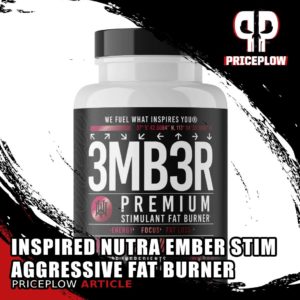



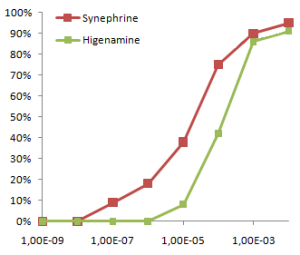

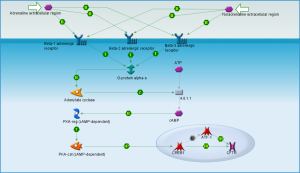

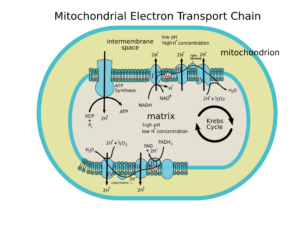
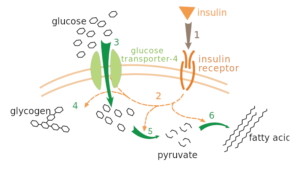
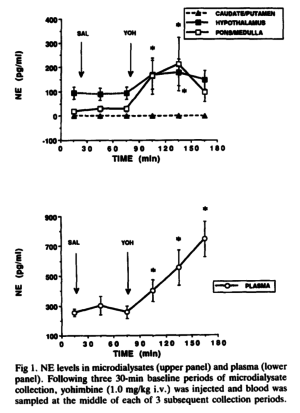



Comments and Discussion (Powered by the PricePlow Forum)